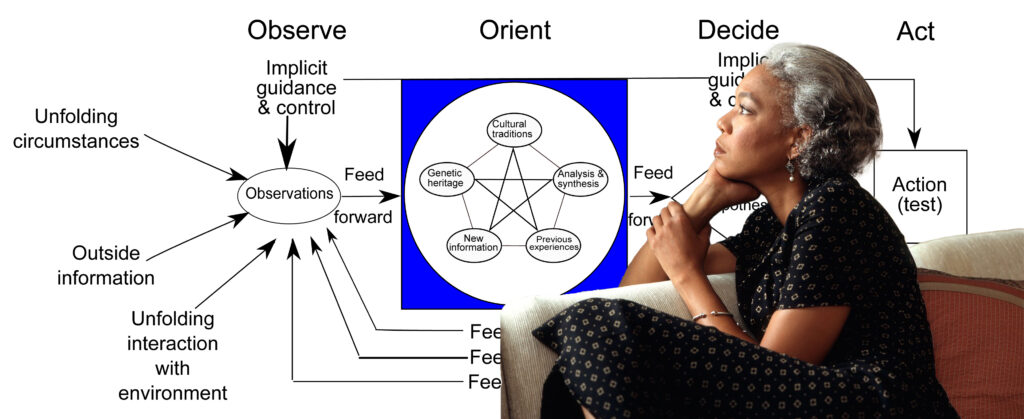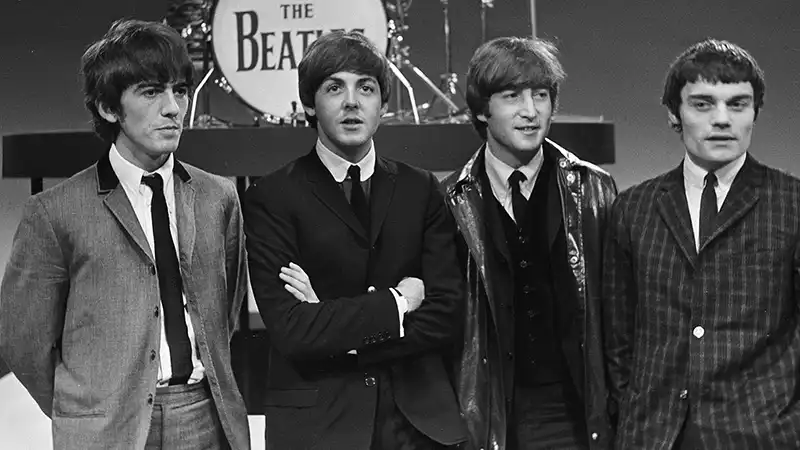
The faster and better we take action against impediments, the more successful we’ll be, according to renowned military strategist John Boyd, developer of the OODA Loop.
The OODA loop is observe, orient, decide and act. It’s how we take action in new situations and succeed. In this episode of the Mindful Agility podcast, Tom Looy explores how John Boyd used the OODA Loop to help fighter jet pilots, and ultimately whole military campaigns, succeed against enemies. You can use it in your own life, even to overcome your own “opponents,” the dysfunctions that hold you back.
How We Act
The most important things in the OODA loop are first to observe what you can and reorient your mental model to fit the data that you have. Sometimes that means you have to destroy your old mental model of how the world works, because it’s not working anymore, and substitute something new that does work.
There’s feedback involved in this loop. When we observe something anomalous, we might need more information to understand what is happening. So that’s feedback that brings us right back to the beginning of the ooda loop.
Then when we stick data into our model, we may discover that the model generates something weird or it doesn’t match what we expect. So we need to get more data. We need to adjust things in our model. We may go right back again to observe more stuff before we can even make a decision. So that’s why there’s feedback directly from observing back to the beginning of the OODA loop or from orienting back to the beginning of the OODA loop.
How We Win
What John Boyd discovered was that the faster we can operate through this loop, the more success we’ll have in many areas, not just in military combat.
Faster looping wins because if we’re looping faster than our opponent, our opponent doesn’t have time to reorient their own mental models. And so we just confuse them. And win.
References
For a book on John Boyd and the OODA Loop, see
- Osinga, F. P. B. (2006). Science, Strategy and War: The Strategic Theory of John Boyd (1st edition). Routledge.
For an article examines the implications of the OODA loop on the Ukraine-Russia war, see
- Flaherty, C. (2022, March 23). The OODA Loop, Information Warfare, the Ukrainian Defense and the Collapse of the Russian Army. OODA Loop. https://www.oodaloop.com/archive/2022/03/23/the-ooda-loop-information-warfare-the-ukrainian-defense-and-the-collapse-of-the-russian-army/
For an article showing how leading indicators are essential for all agile methodologies, including OODA, see



Leave a Reply